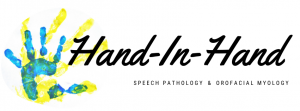 What is Orofacial Myology?
What is Orofacial Myology?
Orofacial Myology (OM) is the treatment of the orofacial muscles to improve muscle function and tone. The goal of OM is to establish correct functional use of the lips, tongue and mandible (jaw), to facilitate normal growth and development. OM is also called myofunctional therapy.
While OM may improve jaw and teeth alignment and structures, the central goal of OM is training of the orofacial muscles. ASHA (American Speech-Language Hearing Association) notes that “Research exists indicating that oral myofunctional treatment is effective in modifying disorders of tongue and lip posture and movement. However, more basic and applied research is needed regarding the nature and evaluation and treatment of oral myofunctional disorders.”
What is an Orofacial Myofunctional Disorder?
An orofacial myofunctional disorder (OMD) is a pattern involving orofacial musculature that interferes with the normal growth, development or function of the structure or calls attention to itself (ASHA).
Examples of OMD include:
- Tongue thrusting at rest or during the swallow. A tongue thrust is where the tongue contacts the front teeth or sticks through the teeth at rest or during swallowing. It is also called “tongue fronting” because the tongue is too far forward.
- Lip incompetency, such as open mouth posture at rest (associated with mouth breathing) and poor lip seal during speech or swallowing.
- Sucking habits, such as sucking fingers, thumb, dummies and other objects.
- Biting habits, such as biting nails, lips or objects.
- Disorders of the temporomandibular joint (TMJ).
- Incorrect breathing patterns, including mouth breathing.
What is an Orofacial Myologist?
An orofacial myologist is someone who is trained in orofacial myology. ASHA notes that the assessment and treatment of OMD is within the scope of practice for Speech Pathologists.
In Australia, Speech Pathologists who wish to specialise in OM may attend training with the Australian Academy of Orofacial Myology (AAOM). The American-based International Association of Orofacial Myology (IAOM) also runs courses in the USA. Speech Pathologists can gain certification with the AAOM or the IAOM.
Some Orofacial Myologists have a different background, rather than Speech Pathology. Many Orofacial Myologists have a dental background – eg. Oral Hygienist.
The treatment of OMD is multi-disciplinary. The team may include a dentist, orthodontist, ENT specialist, Paediatrician, allergist and others.
I have completed training in Orofacial Myology with the Australian Academy of Orofacial Myology and Sandra Coulson, the (grand)mother of Orofacial Myology!
What is involved in Orofacial Myology assessment?
An OM assessment evaluates:
- tongue and lip resting positions
- tongue, lip, and teeth movements during swallowing
- the presence of tongue or lip ties
- the presence of sucking or biting habits and their impacts
- screening of potential airway problems and referral to a specialist if appropriate
As I am a Speech Pathologist, my assessments also evaluate the potential impact on an OMD on communication and swallowing.
What is involved in Orofacial Myology therapy?
Therapy may address specific problems identified in assessment, including dysfunction of the lips and tongue and stopping abnormal sucking or biting habits.
Prior to therapy, I may refer you to an ENT to assess airways, including the size and impact of tonsils, adenoid, and nasal obstructions. If allergies are a problem, you may need to address this before OM therapy, to ensure that therapy is most effective. It is also important to address tongue and lip ties, and OM therapy can assist in the rehabilitation of the tongue and lips after frenectomy.
Therapy is not a walk in the park – it requires effort – although it can also be fun! It is important that clients are committed to daily practice of set orofacial exercises and children need help from an adult with this. There will be regular review of exercises with the therapist. The frequency of appointments depends on whether there are speech goals in addition to OM goals.
Orofacial Myology : My Passion!
I am passionate about applying Orofacial Myology to my Speech Pathology practice. After more than 10 years of working as a Speech Pathologist, I was dissatisfied with my ability to address a number of problems in my clients, due to underlying problems such as tongue thrust and tongue tie (frequently undetected, I suspect). Since completing the intensive course on Orofacial Myology, I am finding that the majority of my clients with speech articulation problems also have an OMD, which is impacting on their speech. In some clients, I suspect that sleep disordered breathing patterns may also be affecting their concentration and behaviour, due to the impact of breathing dysfunction on their sleep.






